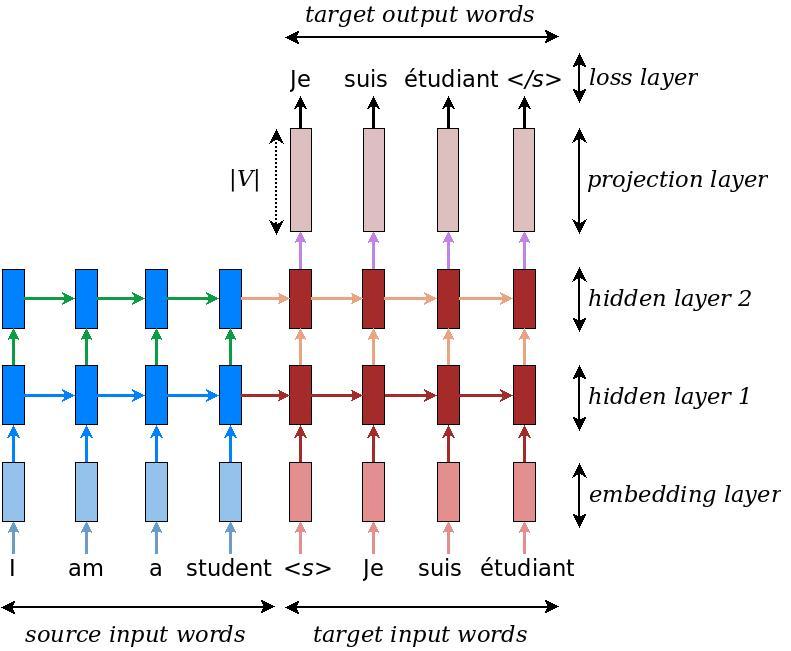Somedays ago a free version of the source code of the GNMT (Google Neural Machine Translation) was release in: https://github.com/tensorflow/nmt by Thang Luong, Eugene Brevdo, Rui Zhao
Sequence-to-sequence (seq2seq) models (Sutskever et al., 2014, Cho et al., 2014) have enjoyed great success in a variety of tasks such as machine translation, speech recognition, and text summarization.
I've used the release of this seq2seq to show the power of the model. Using a vocabulary with just de numbers and letters (the symbols) used for the chess algebraic notation, I was able to train a model to infer the movement a human would do given a table state.
The supervised learning uses then source-target pairs of the form:
Source: rnq1kb1r/pp11ppp1/11p11n11/1111111p/11111111/11111NPb/PPPP1P1P/RNBQR1KB b
Target: Bg4
The source is the state of the board, and the target the movement a human would do in this situation.
In this way the source vocabulary was:
w
/
1
p
r
n
b
q
k
P
R
N
B
Q
Kand the target vocabulary:
p
r
n
b
q
k
P
R
N
B
Q
K
x
+
O
-
1
2
3
4
5
6
7
8
a
c
d
e
f
g
h
=Using a NMT + GNMT attention (2 layers) the model was able to reach a good result with:
eval dev: perplexity 2.83 eval test: perplexity 3.07 global training step 72100 lr 0.868126 step-time 0.51s wps 9.57K ppl 2.76 bleu 20.64
This means that, given a board state whatever, the model can predict in a seq2seq way a valid (and usually human) chess movement.
